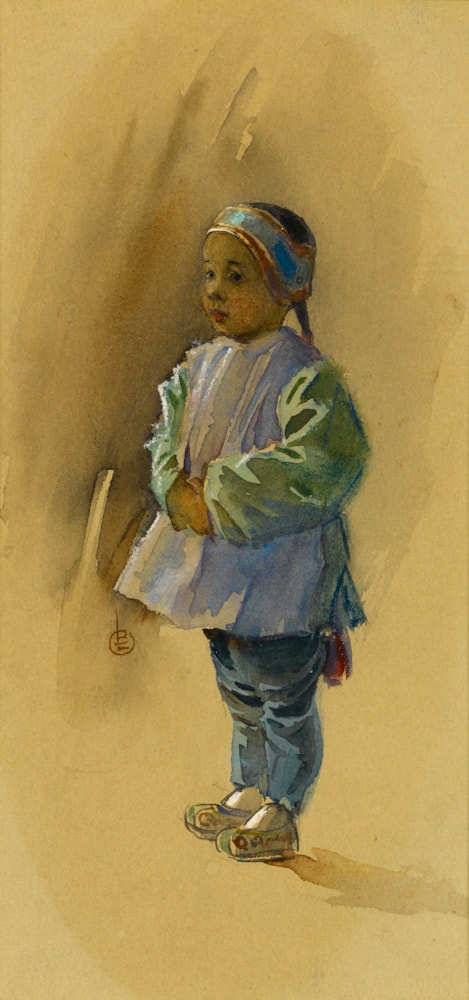
Edward Gordon CRAIG
Stevenage 1872 - Vence 1966
Biography
The illegitimate son of the actress Ellen Terry and the architect Edward William Godwin, Edward Gordon Craig made his first stage appearance with his mother at the age of six. Although he initially worked as an actor, around 1893 he met the artists William Nicholson and James Pryde, and from them learned the art of wood engraving. In 1899 he abandoned his career as an actor and took up the practice of stage design and scenography. By the early years of the 20th century, Craig collaborated with Martin Shaw on modern productions of Henry Purcell’s 'Dido and Aeneas', 'The Mask of Love', and 'Acis and Galatea'.
In 1904 Craig was invited to Berlin to work with the Lessing Theatre, and there wrote 'The Art of the Theatre'. It was also in Berlin that he met Isadora Duncan, whose manager and lover he became. In Berlin Craig worked with Max Reinhardt on productions of 'The Oresteia', 'The Tempest', 'Macbeth', 'Oedipus' and 'King Lear', although only the last was completed. He also worked in Florence, Copenhagen and Moscow, where he designed a famous production of 'Hamle't in 1912. Between 1908 and 1929, Craig published 'The Mask', the most influential theatrical magazine of the day, as well as several books on the theatre, although his activity as a stage designer lessened considerably after the First World War, and his last stage production was mounted in 1929. Craig spent the last years of his life in the South of France, and in 1937 published an autobiography, entitled 'Index to the Story of my Day's. On his death he left much of his collection of theatrical material to the Bibliothèque Nationale in Paris.
As Max Beerbohm noted of Edward Gordon Craig, ‘He is not an easy man to define. But one thing about him is certain. He is a man of genius, and not of that kind of genius which flies hither and thither in divers directions, but of that which concentrates itself ever on one especial aim. From his earliest years, he has had one abiding passion: the Theatre. All his great gifts, his power of large and luminous design, his mastery of the crafts of wood-cutting and of etching, and also his untutored mastery of the art of writing (I know of no prose livelier, more gaily and vernally spontaneous and expressive than the prose in the many books of his), have been devoutly orientated to that one great sacred beacon, the Theatre...In Russia, and in Germany...and in Italy too, the name of Craig has been a famous and greatly honoured one. In England, I think, he has been less laurelled. We are rather less apt than foreigners to be excited about great artists. A great English artist Craig assuredly is.’


